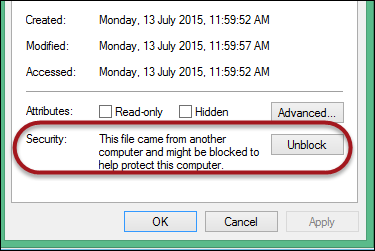Dynamics CRM recently released an updated Dynamics CRM for Phones app as part of the Spring Update 1. It’s Friday and it’s time for a video walk-through.

Give us your feedback, all of it: good, bad, and ugly, I’m sure we can take it. Suggest new topics either in comments or by sending your ideas to jar@crmtipoftheday.com.
 of the
of the
 Solution is to unblock the downloaded archive file prior to unzipping and then your package should work just fine.
Solution is to unblock the downloaded archive file prior to unzipping and then your package should work just fine.

 Had an awesome Skype conversation with the customer while
Had an awesome Skype conversation with the customer while